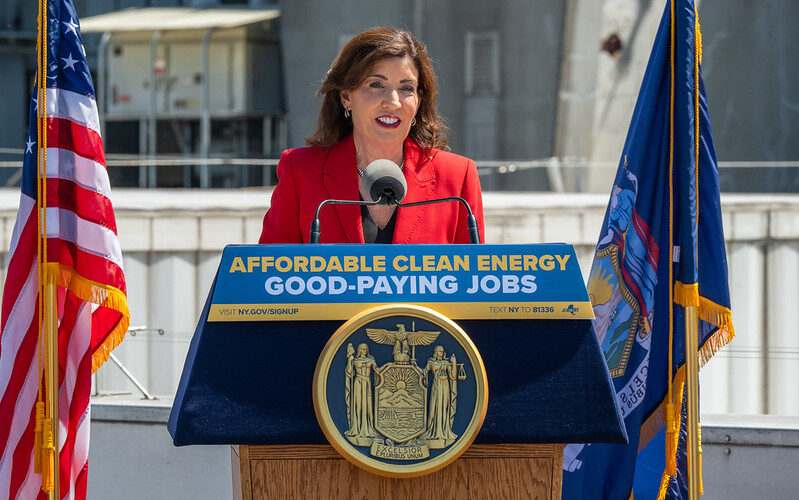Gov. Hochul finally directing the state Power Authority to build a new nuclear plant upstate, a long overdue move, came just as New York sweated through the worst heat wave in memory with air conditioners blasting and Con Ed brownouts.
New York really needs the juice and we are still hurting from the 2021 closure of the Indian Point nuclear power plant, which used to generate 25% of the city’s electricity. Ever since that clean, reliable energy source went away, no thanks to then-Gov. Andrew Cuomo, we’ve been relying ever more on the burning of fossil fuels, despite the fact that New York State has set ambitious targets to slash greenhouse gas emissions. It’s policy at odds with itself.
The new nuclear plant is to have a combined capacity of no less than one gigawatt of electricity, or enough to power as many as a million homes.
Of course, this won’t be like building housing or a school or even a factory. There are reasons that the U.S. had added next to no nuclear capacity in recent years, ironically, the very period during which America has become more and more focused on the threat of climate change.
The last two plants on the timeline were the commissioning of Watts Bar, construction of which began in 1973, in Tennessee in 2016, and then the opening of Vogtle Unit 3 in Georgia in 2023. Exactly zero nuclear plants had come online in the 20 years before Watts Bar — this after a very healthy 20 years in which new plants stepped up to feed an energy-hungry America between 1970 and 1990.
Those reasons include: high construction costs, the rise of cheaper alternatives like natural gas, complicated regulatory regimes, permitting and licensing delays, and more. The NYPA under Hochul will have to contend with all of that and prevail. It’ll be a real test of their management mettle.
Energy conservation is a noble idea, but economic growth invariably leads to a need for more power. U.S. electricity consumption is going up and up, not only because of heating and cooling needs but because of electrification of the transportation sector, the rise of AI and more. Renewable sources like wind and solar — especially solar — are partly meeting the moment. While natural gas remains the dominant source, renewables have hit nearly 45% share of the power generation mix. But that’s not enough.
Nuclear, which now accounts for about 19% of U.S. energy production, has a vital role to play. It’s continuous and reliable, delivering when it’s windy or sunny or not. It doesn’t accelerate global warming. Uranium supplies are abundant, and their prices aren’t nearly as volatile as the prices are for other fuels.
And while nuclear waste disposal is a challenge, it’s very manageable compared to the long-term risks associated with fossil fuel. And as for safety risks associated with scare words like Three Mile Island and Chernobyl, nuclear reactor design has gotten far, far better over the decades. This is a safe power source.
So kudos to the governor for trying to unleash fission energy for our state. The plentiful, affordable energy she is pursuing will be an invisible boon to New York’s economy. It can’t come over the transmission lines soon enough.








